Building content can seem like an insurmountable task. Staring at a blank page can be paralyzing, let alone accomplishing something as simple as choosing a topic. The beginning stages are cripplingly open-ended, with a million opportunities to speak about literally anything and with presumably no guidance as to what will yield the best results — thankfully, SEO is a thing.
To the majority of the world, SEO content strategies are basically magic. If every guide we read were to be believed, then the only thing you need to do in order to build authority and have your pieces rank #1 on Google is to choose a topic, hit a specific character length, incorporate a few keywords, answer a couple of questions, and make sure your H1, H2, H3 structure is in order. Simple, yes? It honestly is, with a few additional steps — which we’ll help you out with.
These are them:
1. Identify your verticals
2. Build an SEO keyword strategy for those verticals
3. Write a lot
4. Wait a little
5. Enjoy your traffic
That’s really it. The execution is obviously a bit more nuanced than the above, and having quality writers (or a quality agency) is honestly the most difficult aspect of this strategy since they’re fairly rare and fairly difficult to train — if that’s even possible.
Let’s get into it.
Step 1: Identify Your Vertical(s)
This should be relatively simple, depending on your industry, business, or subject matter. This is a process that most brands will do during the discovery phase of their marketing strategy development which will help to determine your audience, product categories, tone of voice, visual identity, and all sorts of other highly valuable brand collateral.
If you were to say, for the sake of this exercise, determine that you’re a design studio, your verticals might look something like this:
- Branding
- UX/UI
- Experience
- Packaging
- Ecommerce
- Etc.
You may be launching with only one of these verticals in mind; however, as we develop our roadmaps for products it’s important to identify categories for expansion, both from a content + SEO perspective, as well as from a production and product perspective — and of course inform those decisions with data.
This brings us to…
Step 2: Building an SEO Keyword Strategy for Those Verticals
There are a few ways to go about this approach depending on your budget, the amount of time you have, and just how granular you’re looking to get.
What we’re looking to accomplish during this process is to identify:
1. What people are searching for.
2. Why they’re searching for it.
3. How they can find us through those searches.
Let’s look at both approaches.
Budget Approach
Step 1. Dissecting Search Results:
Starting with our first pillar, branding, we’ll want to get as much data about the what and why for those searching for a branding studio — so we can just Google it.

Your results will look something like this, and you’ll likely notice it’s mostly just ads above the fold — that’s fine and helpful in a few ways.
The first major callout from these results is…the results. Looking at the above search, you’ll notice that it took Google .57 seconds to find us 176M results. What does this mean for you as you’re looking to build your content strategy? It means that there’s a lot of competition in this space and that a lot of other people are trying to get Google to pick their page, over all the other pages, when someone searches for “branding studio” which shouldn’t be surprising considering there’s a lot of them.
This is good, generally, for what we’ll be referring to as our “pillars” there will be a relatively high volume of searches associated with that keyword since it will be the umbrella that all of our content falls beneath (more on this later).
The next piece of information we can glean from this page is from the ad results as seen here:

You’ll see some links below the meta-description for:
1. Case Studies
2. Branding
3. Social Media
4. E-commerce
Some of these may sound familiar, and that’s a good sign since that means our original research was on the right path and it is also likely that some of our “cluster” pieces (more on this later) will fall into the categories of our other verticals.
Scrolling a bit further down the page, we’ll see this segment of the search results:
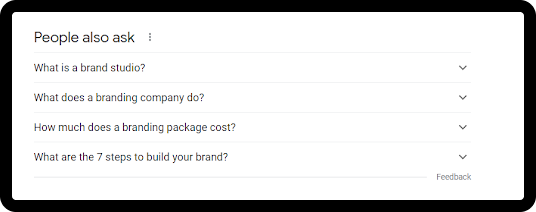
This is incredibly insightful and can help us to frame our content strategy based on these questions.
Similarly, if we look at more results, we’ll find this segment:
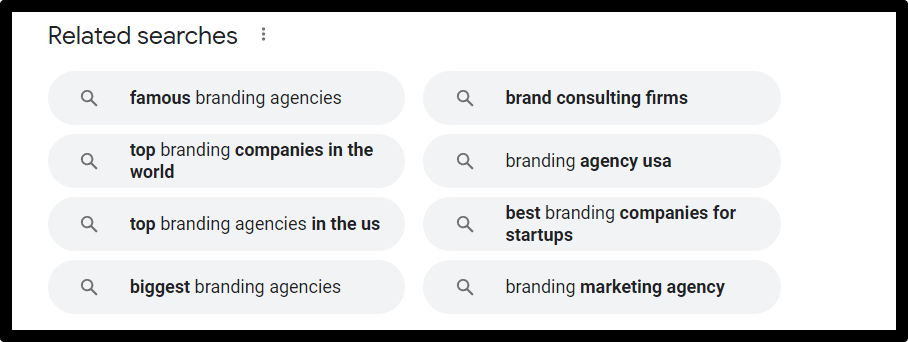
This serves a similar purpose in providing insights into our content categories, and how to structure the pieces of content we’ll be writing to satisfy Google.
Taking this a step further, we can click through to one of the results we’re served to gain insights into how some of the results are structured. This can help inform our H1, H2, and H3 structure, and depending on how the website tags its content can also provide us additional insights into their keyword strategies and relevant keywords for our own content.
This result from The Branding Journal has its content piece structure as this:
H1. What is a branding agency?
H2-1. Definition of a branding agency
H2-2. Responsibility of a branding agency
H2-3. Specializing in brand strategy and brand identity
H2-4. Why it’s important to use a branding agency
H2-5. Conclusion
On the side of the page, we’ll also find a directory of tags that will link us to other pieces of content but can also help to inform opportunities for categories and other content pieces.
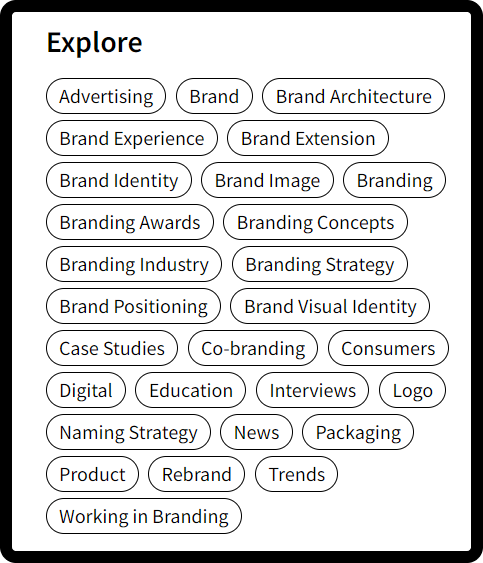
Step 2. Building the Thing:
Now that we have some data from the search results we will start building our first pillar piece of content. The purpose of this piece is to not only act as a comprehensive guide to our brand and services but also to create the foundation for the rest of our content.
Using the page from The Branding Journal as an example, their H1 structure informs Google that they want to rank for a ‘branding agency’ and also that they are seeking to answer the questions for their H2s.
If we were to take this a step further, we would take the section of their page for H2-3 to create H3s for each of the subcategories to use those as the cluster pieces for our strategy based on the services we’re offering, and the traffic we’re looking to win.
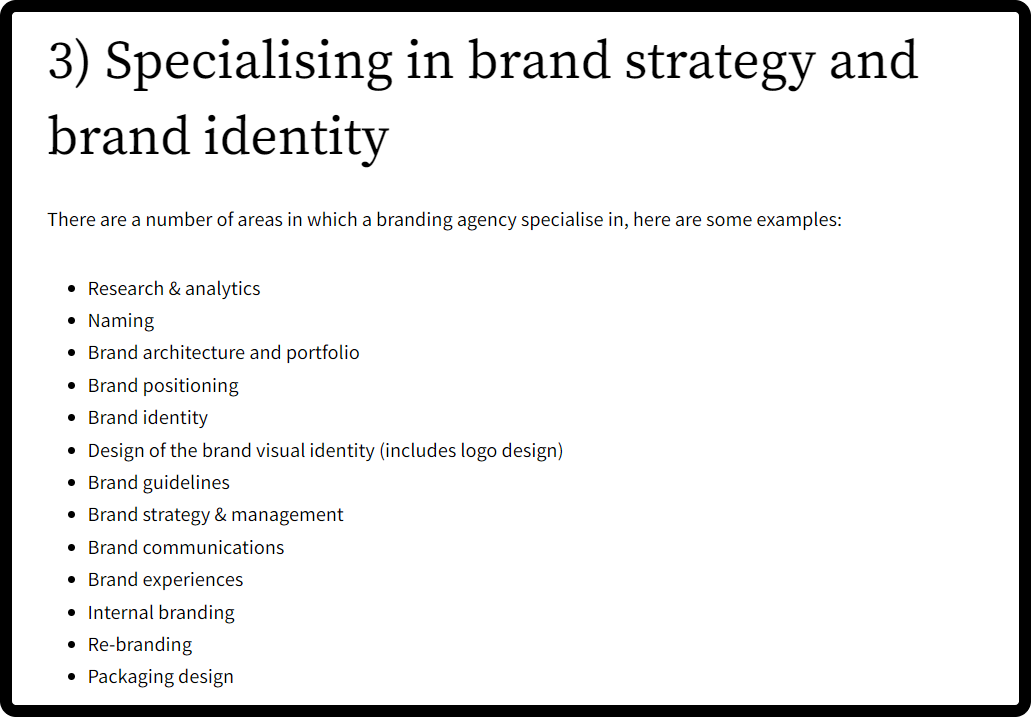
Our outline might look something like this using the questions from Google and the piece from The Branding Journal:
H1. What is a branding agency?
H2-1. Definition of a branding agency
H2-2. Responsibility of a branding agency
H2-3. Specializing in brand strategy and brand identity
H3-1. Brand Design
H3-2. UI/UX
H3-3. Experience Design
H3-4. Packaging Design
H4-4. Ecommerce Design
H2-4. Why it’s important to use a branding agency
H2-5. Cost of branding agency services
H2-6. Conclusion
As you’ll see, we’ve expanded a bit on what they’ve offered with each H3 being an individual section of the piece which will give an overview of that particular service.
The purpose for this is, as part of our strategy, we will build out similar structures for each of our services by repeating the steps above creating comprehensive guides to each of the services, which will then break down into the nuances of that service, which will get their own content pieces, and so on. These pieces will all provide bidirectional traffic through link exchanges in the piece — basically, you can link back and forth between your own content and Google likes that because it shows that you’re providing value.
Essentially what this system creates is a web of content that generates its own authority for Google in a few simple ways. Not only does it seek to make informed decisions based on existing content to be better by satisfying the existing intent of the previously published pieces, but provides a content journey that goes beyond the initial intent to satisfy all audiences.
Being a foodie, I always look at this as a multi-course content menu. If you go to a restaurant, they typically have snacks, small plates, and full-on entrees — while typically asking if you want dessert at the conclusion of the meal. We’re doing the same thing here, providing our reader’s opportunity to glean a small content snack if they need a brief overview of a concept, but also linking each snack to another piece that serves as a full-on meal. The dessert typically comes in the form of social media posts and other sorts of sweet offerings like CTAs to reach out or download a PDF guide.
The SEO Pro Approach:
As SEO magicians, we’re not going to give away all of our secrets here, but consider this something of a TL;DR of a more involved version of the above approach with some extra tools mixed in and added steps to drill down further into the data to determine your content strategy and create something like the below document.

While this may seem complex, it’s really simple and of course backed by data in order to give fair projections of things like, traffic potential, match volume, difficulty, and other factors to consider as you build your content strategy. These insights will allow you to better understand which pieces of content you should be developing at what stage of your site’s authority, and what steps must be taken in order to properly rank for certain terms — though that’s a whole essay on its own.
The condensed approach essentially involves using ahref’s keyword explorer to generate a fairly comprehensive overview of your targeted keyword for your content strategy — the one we previously selected while determining our vertical.
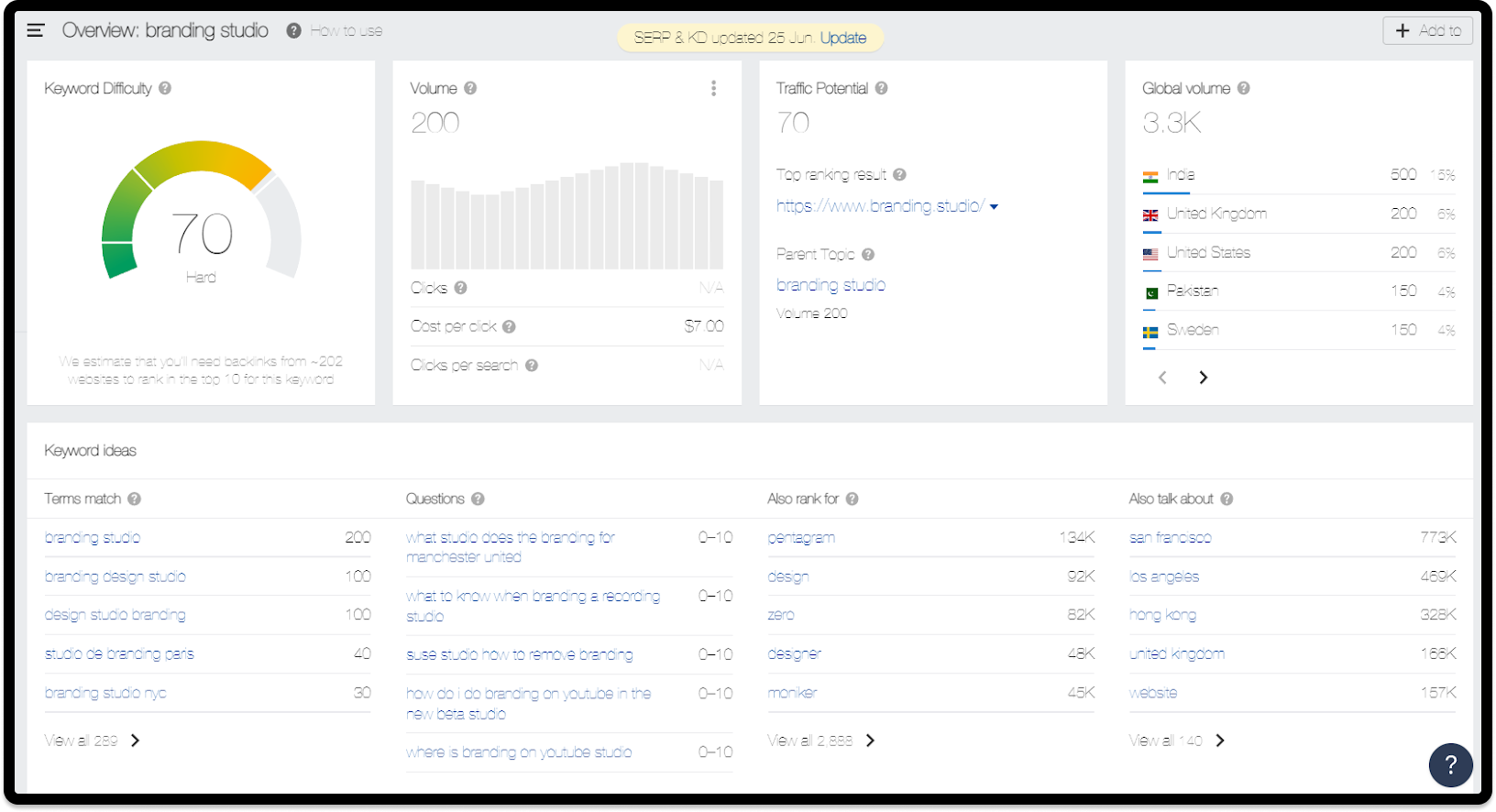
As you can see above, there’s an incredible amount of data and nuance that can be gleaned from these reports as they provide insight into:
1. Keyword difficulty
2. Volume
3. Keyword ideas
4. Questions
5. Traffic potential
6. Global volume
The beauty of these reports is that, similar to the budget-friendly approach, you can see from a high level which keywords you should target, which questions you should be answering, potential other keywords to build into your strategy, and so on.
Relating this back to the above spreadsheet, this information can be broken down into Top, Middle, and Bottom funnel pieces that all supplement your content strategy for growth. Top-of-funnel content will be relatively broad and act as the pillar pieces for your content strategy in order to answer all of the related questions and give an overview of the terms that are to be addressed in your middle funnel content. Middle-funnel becomes more nuanced and specialized as you begin to dive deeper into your vertical, the specific services that you offer, and target for searches that have a higher intern — someone searching for “branding studio” may be at the early stages of their search vs. someone searching for “UI designers” may be searching specifically for that service. Bottom-funnel then drives the authority to the highest intent searches as they become branded content that speaks specifically to your services and specialization within your vertical. The person previously searching for UI designers now is aware of your services and will be looking specifically for key information relating to your studio.
We’re not done yet though.
Middle funnel pieces can all become more incrementally fractured and specified as their own pillars, which can then be broken down into cluster pieces of their own. For the UI design, a UI 101 piece can be written that gives a comprehensive overview of UI design, the specific aspects of the practice, and provide examples of each. That piece can then have each of the H2 sections speaking to Font Hierarchy, Interface Elements, and other sorts of UI elements which can all be given their own individual deep dives as part of the content strategy — the rabbit hole can go as deep as you’d like.
The intent here is, again, to leave no search unsatisfied. For our query for Keyword Ideas, there were 289 suggestions from ahrefs. That’s 289 individual pieces that we can write content for, with varying levels of complexity, intent, and difficulty. As we do this, these pieces can all link back to each other, generating traffic to our other pieces, building authority, and helping to drive growth.
Low + Slow
If this seems like a substantial amount of work and effort, it is. Depending on your vertical, you may be producing content that is going toe to toe with the likes of Pentagram (in the case of the branding studio) or even Twitter or Google themselves. That’s not to say that you should be discouraged, and looking through the data and keyword difficulty will help to inform your strategy as you build authority and drive traffic.
Ultimately, this is a working solution that will constantly need to be updated as the information in your blogs becomes out of date, or other pieces outrank you for any number of reasons, but that’s half the fun — it’s a strategic game of content. But it’s also something that should be recognized as a long-term play as a part of your growth strategy.
In the age of authenticity and where authority is valued above most other metrics for brands, having the content to back up your expertise is a necessary component of any strategy. The last thing you want for a brand as you drive audiences down the funnel is for them to find you on social media, or get served an ad, search for your product, and find someone else’s results, or that someone else has a more comprehensive blog post covering your presumed area of expertise.
The beauty in this process, however, is that it can be built as a precursor to your product and brand to start building authority even before you’ve launched and can stick with you throughout the entirety of your brand’s lifecycle. Social media channels can change, algorithms can be unpredictable, but SEO is forever.





